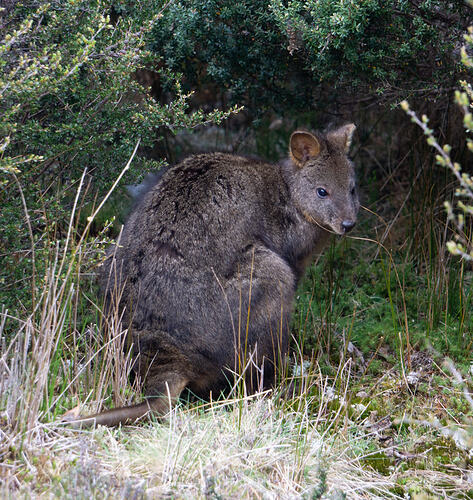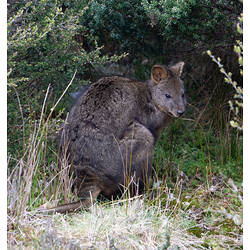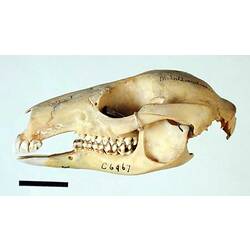General Description
Compact wallaby with rounded ears, dark grizzled fur on back and rufous brown fur on belly. No distinct markings on the face or hips. Average weight is about 7 kg for males and 4 kg for females, with males being up to 120 cm long including tails. Tails are shorter than body and are approximately 30-40 cm long.
Biology
Solitary and nocturnal wallabies that feed on herbs, grasses, shoots and nectar-bearing flowers near the forest edge. Sexually dimorphic, males are considerably larger than females, and like their larger kangaroo cousins, will engage in ritualised 'boxing' fights over dominance and mates. Mothers give birth to an average of 1.3 young per year. Lifespan in the wild is estimated at 5 years.
Distribution
Tasmania, King Island, Furneaux Islands and Flinders Island. Formerly found in southern Victoria as well but now extinct on the mainland.
Habitat
Wet forest and woodland, heath, scrubland.
More Information
-
Animal Type
-
Animal SubType
-
Brief Id
Small greyish-brown wallaby with yellow to rufous underparts and tail shorter than body.
-
Colours
Brown
-
Maximum Size
120 cm
-
Habitats
-
Diet
Herbivore
-
Diet Categories
Herbs, Grasses, Flowers
-
Endemicity
-
Conservation Statuses
CITES: Not listed, FFG Threatened List: Threatened, EPBC Act 1999: Not listed, IUCN Red List: Least concern
-
Taxon Name
-
Common Name
Rufous-bellied Pademelon
-
Other Names
Tasmanian Pademelon
-
Kingdom
-
Phylum
-
Subphylum
-
Class
-
Superorder
-
Order
-
Suborder
-
Superfamily
-
Family
-
Subfamily
-
Genus
-
Species Name
billardierii


